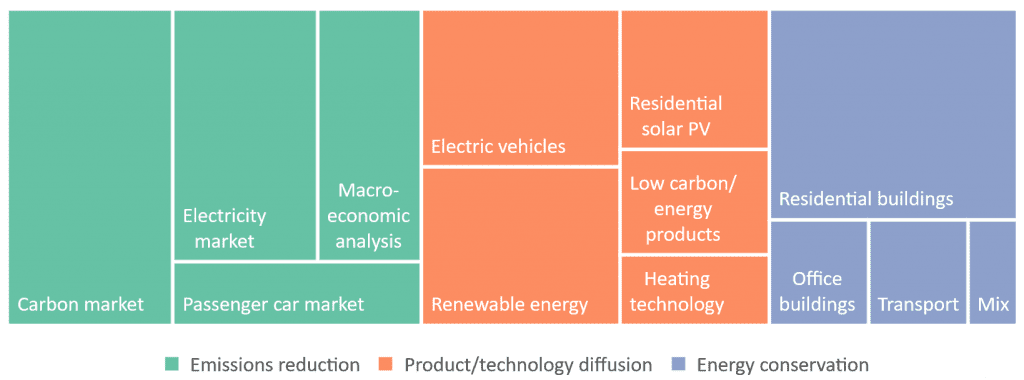Solving climate change is an unprecedented challenge. Different disciplines and society at large have proposed many different policies and strategies to confront the issue. To foster well-informed public and political debate, we need suitable methods to analyze policies and their combinations.
Designing effective climate policies requires a solid understanding of how economic agents such as consumers, producers, investors, and innovators behave and interact with others. Traditional studies that model climate–energy policy assume rational, self-interested, and socially isolated agents to simplify modelling and analysis. But behavioral economics and social psychology challenge these assumptions, suggesting the need for a richer treatment of human behavior in climate policy studies.
By integrating diversity and relevant aspects of human behavior — diversity of agent preferences and incomes, deviations from rational behavior, and social influence in social networks — agent-based models (ABMs) provide a much-needed link between systemic policy analysis and behavioral studies. This gives rise to interrelated changes in decisions by agents over time, in turn allowing researchers to test the effectiveness of a wide range of climate and energy policies under realistic conditions.
This explains why ABMs are being applied more and more to climate mitigation policies.
In a recent study in WIREs Climate Change, a group of researchers review ABMs addressing emissions reduction, product or technology diffusion, and energy conservation, along with their sub-themes.

This review covers 61 studies assessing a wide range of policies, including carbon taxation, emissions trading, adoption subsidies, and information provision instruments, such as smart meters and eco-labels.
The study’s authors examine the core features of ABMs used for climate–energy policy, including application types, empirical basis, featured markets, agent behaviors, and social network configurations, in an effort to identify gaps and opportunities for further study. They also consider policy dimensions — the problems addressed, policy objectives, instruments, scenarios, and insights, in particular.
They find that compared to traditional models, ABMs offer consumers and producers greater flexibility in reducing their emissions by providing a more realistic range of individual choices and product options. This could potentially result in less drastic sacrifices in terms of individual welfare and more optimistic insights on the effectiveness and affordability of climate policy.
The authors recognize that more work is needed to confirm the general nature of this finding, including the use of macro-ABMs that account for macroeconomic links, such as that between income formation and consumer spending.
Another interesting finding is that adoption subsidies may not work as well as suggested by traditional studies, for several reasons: they mostly affect early adopters and those sensitive to prices, they especially reach agents who would have adopted in any case, and behavioral effects like habits can moderate the speed of adoption and diffusion.
The authors conclude that modellers can control the complexity of ABMs by striking a good balance between realism, minimal errors, and clear interpretations of outcomes. If well designed, ABMs can be a great tool for determining effective, equitable, and affordable climate policies.
Reference: J. Castro et al. ‘A review of agent-based modelling of climate-energy policy.’ WIREs Climate Change (2020). DOI: 10.1002/wcc.647

















